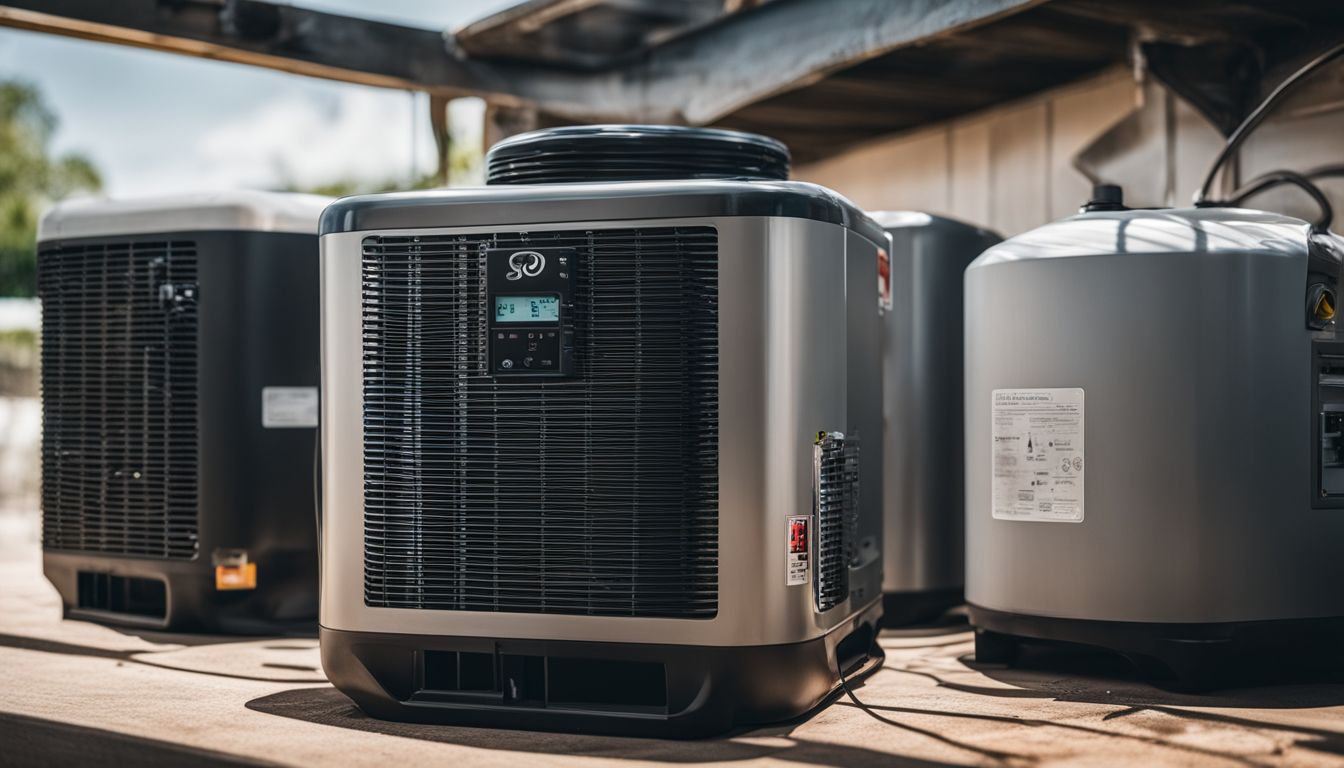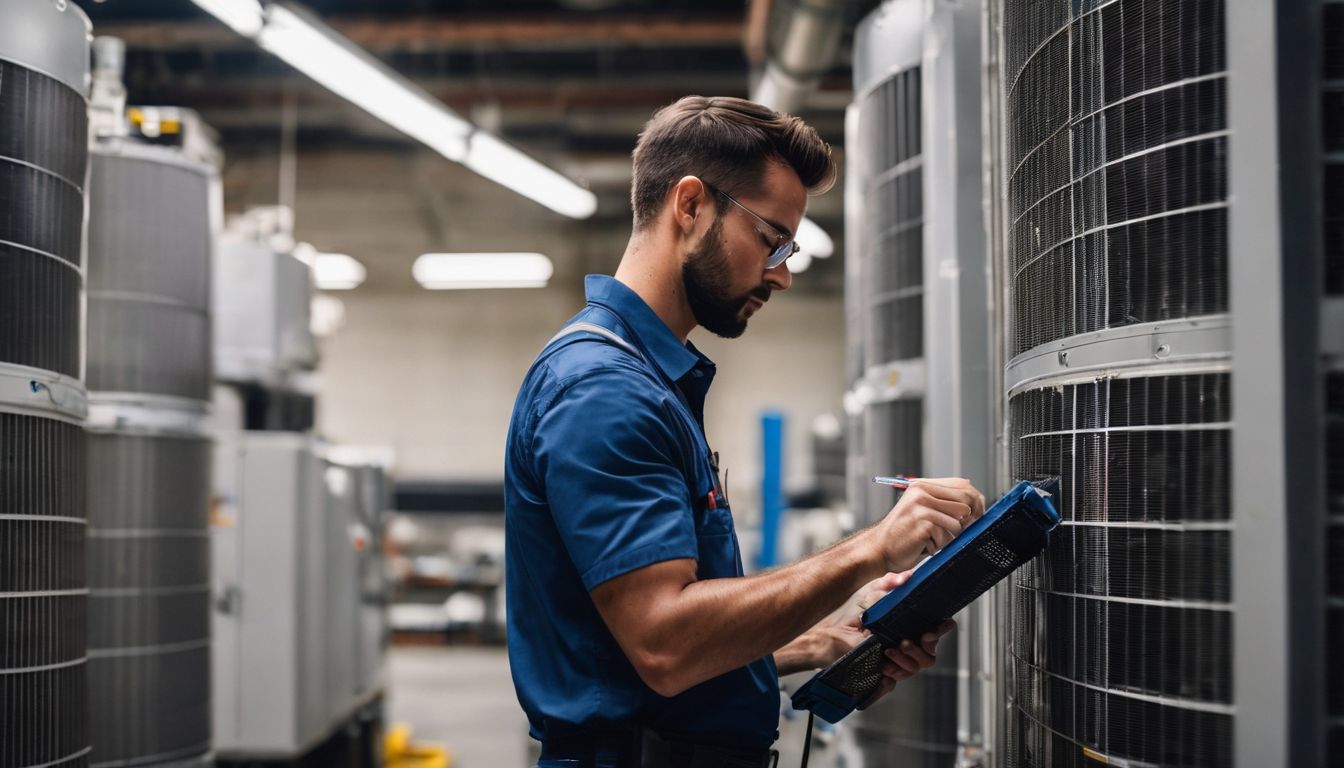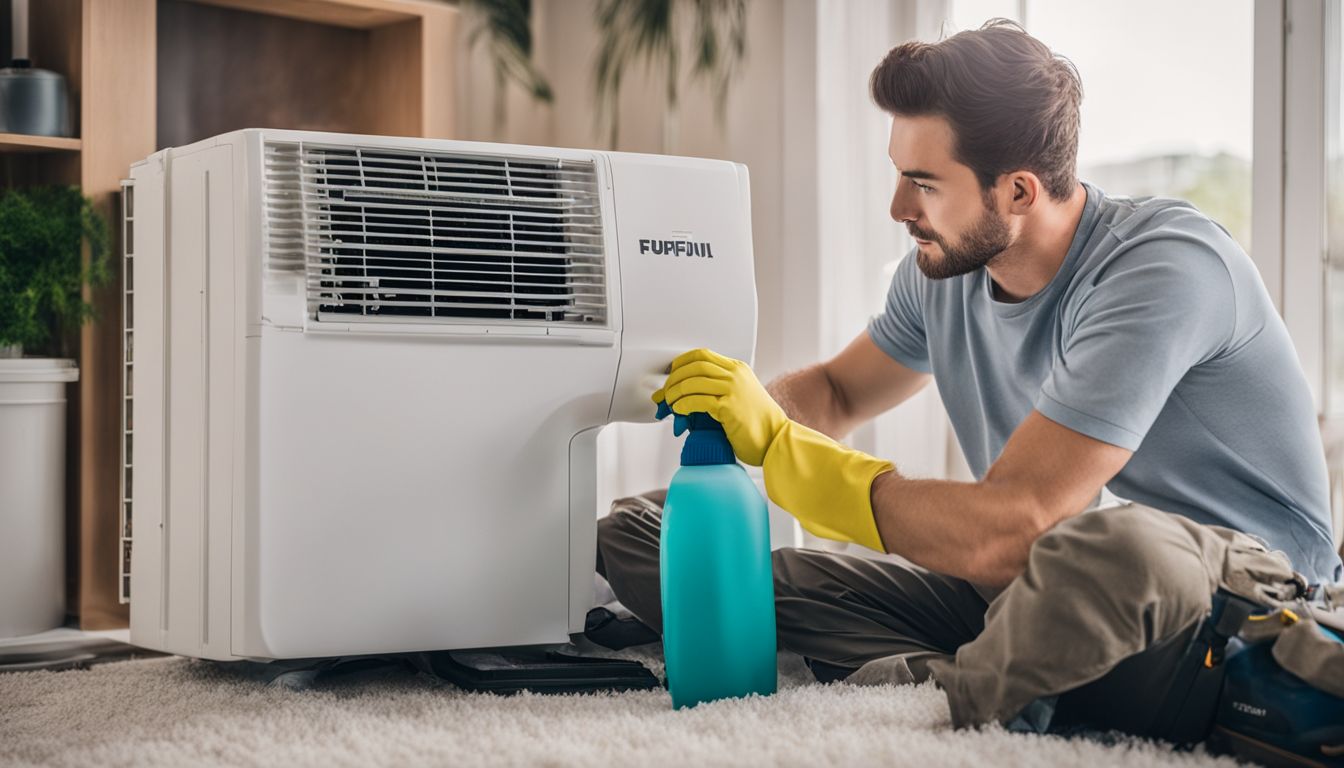Air conditioners are vital for comfort, yet when they falter, the heat can be unbearable. One lesser-known hero within these systems is the refrigerant, a substance that’s key to your AC’s cooling abilities.
This article delves into how refrigerants keep spaces chilled and what happens when their levels aren’t up to scratch. Keep reading; it’s cooler ahead.
Understanding the Role of Refrigerants in Air Conditioning Systems
Refrigerants play a pivotal part in the functionality of air conditioning units, operating as the vehicle for heat exchange. These substances pick up indoor heat by rapidly evaporating in the evaporator coils and then releasing it outdoors when they condense in the condenser coil.
This cycle repeats continuously to maintain a cool environment inside.
The efficiency and environmental impact of an air conditioning system hinge on its refrigerant type. Modern refrigerants such as R-410A have been developed to be more eco-friendly, with reduced global warming potential compared to older types like chlorofluorocarbons (CFCs).
Correctly managing these fluids keeps AC systems running smoothly while also guarding against ozone layer depletion and contributing to greener living initiatives.
How Does Refrigerant Work in AC Units?
Refrigerant cycles through your air conditioning unit, playing a critical role in cooling your home. The compressor sends the refrigerant gas towards the condenser coils, where heat is expelled into the outside air.
This process transforms the gaseous refrigerant into a cool, high-pressure liquid form that travels through pipes into your home’s interior.
Inside, this liquid passes through an expansion valve that reduces its pressure and allows it to evaporate rapidly in the evaporator coils. During evaporation, heat from indoor air gets absorbed by the refrigerant, effectively lowering room temperature.
As it picks up heat, the refrigerant turns back into a low-pressure gas state and goes back to the compressor to repeat this cycle—making consistent climate control possible inside living spaces.
Different Types of Refrigerants
The choice of refrigerant in an AC unit is critical, as it directly impacts the system’s efficiency and environmental footprint; delve deeper to understand why options like R-410A are becoming industry standards.
R-22 Refrigerant
R-22 refrigerant, also known as HCFC-22, has been a common coolant in air conditioning systems for many years. Its ability to absorb and release heat effectively made it a staple in older AC units and HVAC systems.
However, research found that when R-22 leaks into the atmosphere, it becomes a potent greenhouse gas that contributes significantly to ozone depletion.
Consequently, environmental protection initiatives like the Montreal Protocol have mandated the phase-out of R-22 due to its harmful effects on the ozone layer. Manufacturers no longer produce R-22-based cooling equipment, shifting towards more environmentally friendly alternatives such as R410A and other hydrofluorocarbons (HFCs).
For existing systems still operating with R-22 refrigerant, careful handling is crucial during servicing to prevent leakage and potential environmental harm. As we move forward, sustainability and energy efficiency become paramount in developing new refrigerants for heating and cooling applications.
R-410A Refrigerant
R-410A, widely known by its brand name Puron, stands as a leading choice in the refrigerant market for air conditioning systems. Composed of a blend of R-32 and R-125, this hydrofluorocarbon (HFC) offers an efficient solution for heat transfer in both residential and commercial settings.
Unlike its predecessor R-22, R-410A boasts superior energy efficiency and environmental properties that align with international standards aimed at reducing ozone layer depletion.
Manufacturers favour R-410A for its low contribution to climate change compared to chlorofluorocarbons (CFCs). The use of this refrigerant has grown exponentially across Japan, Europe, and the United States due to its ability to operate at higher pressures effectively enhancing cooling power within AC units.
Transitioning from older freons to eco-friendly alternatives like Puron reflects industry efforts towards more sustainable practices in heating, ventilation, and air conditioning (HVAC) technologies.
R-32 Refrigerant
R-32 refrigerant, known scientifically as difluoromethane, stands out for its role in air conditioning technology. It conveys heat with exceptional efficiency and has a lower environmental impact than many of its predecessors.
Industries are increasingly turning to R-32 due to its balanced performance in the refrigeration cycle and its reduced potential for depleting the ozone layer.
Handling R-32 requires care because it is flammable; this underscores the need for expert management of air cooling systems using this compound. Despite this characteristic, R-32’s adoption reflects a move towards more eco-friendly coolants that offer both practical benefits and a commitment to environmental responsibility.
This latest hydrofluorocarbon compound promises an evolution in heating pumps, fridges, freezers, and ACS—ushering in a new standard for energy-efficient climate control solutions.
Identifying Common Signs of Low Refrigerant Levels
If your AC unit starts making hissing or bubbling noises, it’s a red flag that you might have a refrigerant leak. A system low on refrigerant struggles to cool the air efficiently and often results in short-cycling, where the unit turns on and off more frequently than normal.
This not only disrupts comfort but can also lead to spikes in your electricity bills due to the increased energy consumption needed to attempt to maintain the desired temperature.
Noticing ice build-up on evaporators and copper coils of your AC unit is another telltale sign pointing towards low refrigerant levels. When there’s insufficient heat absorption due to inadequate refrigerant, condensation freezes around these components, causing ice formation.
Additionally, if you feel that the airflow from your vents has weakened or that rooms are taking longer to cool down than usual, it suggests that your cooling system isn’t getting enough of this crucial heat transfer fluid.
Regular checks for these symptoms will help ensure the optimal performance of your air conditioning unit while preventing potential damage from running with low refrigerant levels.
The Function of Aircon Vents in Refrigerant Circulation
Aircon vents are essential for moving the refrigerant through your air conditioning system. They ensure that the cooled air produced by the refrigerant reaches each corner of a room effectively.
As the gaseous refrigerant evaporates and absorbs heat, it creates cool air that needs to be delivered efficiently throughout your space. This is where vents step in, directing this cool air to help maintain a consistent temperature.
Vents also contribute significantly to maintaining correct pressure levels within an AC unit’s ventilation system. Consistent airflow allows the refrigerator to cycle properly from gas states back into liquid form as it cools down in condensing units outside your home or office.
Not only do they facilitate the transition between these states, but well-placed and designed vents optimise refrigerant circulation for top-notch performance and efficiency of an AC unit’s cooling capabilities.
Conclusion

Air conditioning systems rely heavily on the smooth operation of refrigerants. These substances capture heat from our homes and eject it outdoors, keeping spaces cool and comfortable.
They manoeuvre through a complex dance between coils and compressors, guiding warmth away with precision. Each type of refrigerant plays its part in protecting both our comfort and the environment.
It’s important to keep an eye out for signs that your system may be running low on this crucial substance. Properly functioning vents are key to maintaining this flow, ensuring efficiency in every cycle of cooling.
Embrace the significance of refrigerants; they’re not just chemicals but guardians of our indoor climates.
To learn more about the role of aircon vents and their importance in refrigerant circulation, please visit Understanding the Function of Aircon Vents.
FAQs
1. What function do refrigerants serve in air conditioning units?
Refrigerants are essential to AC units as they absorb heat from the environment, allowing the air cooler to lower humidity and temperature by pumping this captured warmth out of a designated space.
2. Why is the boiling point of a refrigerant important for its effectiveness?
The boiling point of a refrigerant determines how efficiently it can carry and release heat. Refrigerants with a low boiling point transform into a gas at lower temperatures, which enables effective heat exchange vital for cooling processes within compressors and evaporative air conditioning systems.
3. How do chlorofluorocarbons (CFCs) affect the ozone layer?
Chlorofluorocarbons have been identified by environmental protection agencies as harmful substances that lead to the depletion of the ozone layer when released into the atmosphere due to their destructive interaction with ozone molecules.
4. Are there environmentally friendly alternatives to traditional refrigerants used in AC units?
Yes, modern developments in technology have introduced alternative refrigerants such as those used in heat pumps, which minimise environmental impact whilst maintaining efficiency in heating and cooling applications.





